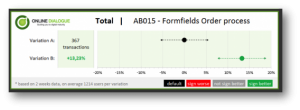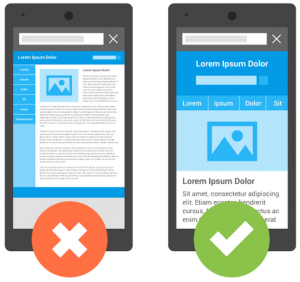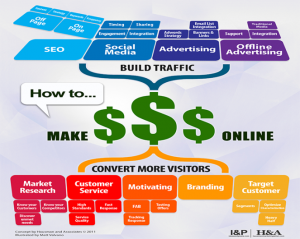
So, you have decided to use Twitter for business. Whether you’re just starting out on this social media network or are way beyond your first tweets and hundreds of followers, this article is useful as it explores the fundamental aspects that make Twitter a great social media network to be on.
Setting up your Business Twitter profile
The basic rules of engagement
Twitter is a platform where users primarily share their thoughts and find out what’s happening in the world through news and trends, all communicated in 140 or fewer characters.
“Businesses can tap into Twitter to expand their reach and connect with new and existing customers”. – Intro to Twitter for Business
If you’re not familiar with this network, read The Twitter glossary which includes all the terms you need to know, including tweets, mentions and likes.
These three basic tips will get you started:
1. Walk before you run
Users expect any legitimate business to have a properly filled out profile with a profile image, cover photo, description and website link. Once your account is set up, don’t be tempted to start burst-tweeting where you send out several tweets in a short space of time. This will only make you run out of great content very fast. One of the fundamentals of a successful social media strategy is planning, so make sure you determine what Twitter will help you achieve, and also what and when you’ll be tweeting.
2. Listen first, talk later
The best way to get started with building a following is to speak their language. Do searches for the name of your clients’ brand name and the products they sell to find out if anyone is already talking about them. Search for relevant keyword terms and phrases as well as any mentions of their competitors. The trick here is to evaluate the results and monitor these searches as each can present an opportunity to reach out to a potential prospect, either by giving advice or thanking them for a nice mention.
3. Make every tweet count
Write good headlines, add images and infographics where possible, and give credit when it’s due by retweeting other tweets and “@” mentioning others in yours. Posting regularly is a must and it’s good to follow the 80/20 rule – post four entertaining or informative tweets for every one promotional tweet. Twitter is about engaging with your community, not spamming.
The recent Twitter changes have eased the restrictions on its signature 140-character limit by no longer counting images towards the limit. There will be more changes soon, including the removal of profile names and the traditional @ sign.
Now that you got your refresher on Twitter and its rules of engagement, it’s time to move on to the bit that makes Twitter great for marketers and businesses alike.
What it takes to succeed on Twitter
Twitter has come a long way since it was first launched in 2006. From short, text-like messages to a fully fledged social media network that supports images, live video and paid advertisements. What’s more, it’s now considered the first place to go for finding out what’s happening in the world. The following fact is morbid, but adds emphasis the above:
The news of Whitney Houston’s death broke on Twitter 27 minutes before the national press. – reported by Mashable, 2012
Broadcast your own story
As its mission statement details, Twitter is all about broadcasting what’s new and making it easily available to its worldwide users. This brings the opportunity for businesses to share their own story and become broadcasters. If you or your clients are in the news, entertainment, music or gaming industries, Twitter can prove to be an essential part of your social strategy.
“All right! We did not die today! I call that an unqualified success.” #WednesdayWisdom pic.twitter.com/wPu1t4ERXm
— Disney•Pixar (@DisneyPixar) January 25, 2017
Moments and currently trending topics are all powerful tools, not only to find like-minded people, but also discover amazing content that you can provide.
There are quite a few advanced Twitter features that can help you further improve your content and your presence on this social network. For example, you can participate in (or host) Twitter chats, Q&A sessions, create Twitter polls or even dip your toes in video.
Delight customers – old and new
According to the Consumer Insights Study [PDF] conducted by Twitter in 2016, users take following or mentioning a brand quite seriously. Not only do users discover new small and medium businesses (SMBs) thanks to the network, 68.7% have purchased something from an SMB because of something they saw on Twitter.
93.3% of customers plan to purchase from the SMBs they follow. (Consumer Insights Research, Twitter 2016)
This is empowering for marketers who work with small to medium-sized businesses. It’s also key to mention that customers have also made a habit of using Twitter as a support or customer service channel, where fast responses are essential.
According to research put out by Lithium Technologies and published on SearchEngineWatch, 53% of users expect a reply to their tweet within the first hour. Considering that this research was done in 2013, this number may have only decreased. So make sure you respond promptly and always say your thanks for a great mention or feedback.
How I Use Evernote to Keep My Entire Life Organized via @AptTherapy https://t.co/TA9de6THRh pic.twitter.com/430eOsT5bQ
— Evernote (@evernote) January 26, 2017
Engage and meet influencers
The momentary nature of Twitter may as well be its greatest aspect. At any given time, anyone can directly engage with their mentor or company with a simple tweet. No pending invitations and no approvals required – just speak up.
This can be used to reach out to industry leaders and influencers to build relationships with them so that when the time comes, you can collaborate or quote them in your next social media post or blog. Create a list of people or companies you’d like to cooperate with in the future and make an effort to engage with them on social media.
Expand your reach with hashtags
Hashtags deserve a separate mention on this blog post. Fun fact: The first hashtag (#) as we know it was first used in a tweet by Chris Messina back in 2007.
how do you feel about using # (pound) for groups. As in #barcamp [msg]?
— Chris Messina (@chrismessina) August 23, 2007
Hashtags have not only become an invaluable tool for content discovery, but have also expanded to other social networks, including Instagram and Facebook.
The rule about using hashtags on Twitter is simple: keep them relevant and don’t overdo it.
One or two hashtags is enough to get your content discovered by audiences who are yet to follow you. Similar to how others can find you, you can search for others using hashtags. Create Twitter lists for your brand name and industry relevant hashtags to help you keep track of any opportunities and mentions without that @ sign.
Are you maximizing your reach on Twitter? Download our free social media calendar to find out the key events and their trending hashtags you can post about on social media.
Digital & Social Articles on Business 2 Community(84)







